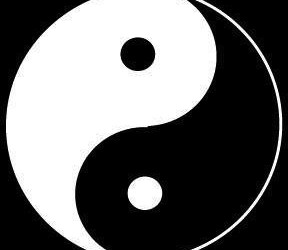Beware of “Trendy”
Earlier this year, a high-profile business writer posted an article, “The Elevator Pitch is Dead.” Within minutes, the blogosphere lit up with gushing commentary.
Personally, I find it comical to see how quickly people jump on popular bandwagons. One trendsetter’s bold statement is no death warrant to the elevator pitch. And therein lies a paradox. Maybe the elevator pitch is actually timeless!
As a Taoist who believes that the world is constantly pulled by the forces of Yin Yang, I see dualism everywhere. Paradox rules the human condition. And pitching — persuading — is a deeply human, endeavor.
The First Paradox
If you believe the elevator pitch is dead, you’re dead.
In the brave new world of crowded schedules and message bombardment, where the emotional delete button is one click away, decision-makers often don’t give you a second chance… and the first chance can last only seconds. You can call it anything you want, but you need to pitch quick.
If you’re proposing a new initiative, you have to grab the stakeholder‘s attention, be compelling and quickly engage in a true dialog.
It’s not about the venue. (“Top floor, executive suite, please.”) It’s about making your point compellingly, and gaining approval effectively.
Which brings us to…
The Second Paradox
The best pitches don’t feel pitchy.
The slick ad promo is long dead, I agree. Use it at your peril.
But the best pitches feel like conversations. In fact, they are conversations. And you are the moderator.
You have to hook and engage. This is the heart of the Yin Yang Elevator Pitch.
Think Yang First
Yang is the human force associated with aggression, with being pro-active, as opposed to passive.
In the elevator pitch, Yang focuses on hooking, on grabbing the stakeholder’s attention from the very first sentence.
Hooks are best when they are simple. They may be wrapped in management speak, but they appeal to the emotions as much as the intellect.
“We are losing customers to the competition, and we will continue to do so until we improve our recovery time.”
That does not speak beneath the mental side of any business person. It has rationale to it. But it will also strike an emotional cord, and emotions drive action.
Emotions can only be triggered with simplicity. Complexity is for the mind, the head. Simplicity is for the heart, the gut.
Of course, once the hook is set, you must quickly support it rationally, lest the mind will wriggle the hook free. Dualism at work!
Use no more than three support points. Even in rational territory, anything more than three at this stage is too complex.
“When in doubt, leave it out!” One strong support point is better than one being followed by two weak ones.
Perhaps to the above topic of recovery time, showing how “profitability will be negatively impacted unless action is taken” may be all the support you need. Hammer this one home, but keep it brief.
Then loop back to the essence of your hook.
Yin Is More Seductive
Yin is the force associated with being passive, accommodating. The most persuasive leaders — and the best salespeople — may be strong speakers, but they also listen as well as they talk .
Yet how do you listen while keeping the conversation going?
Firstly, by asking effective questions. Not just any questions, but questions tailored toward engaging the stakeholder as part of the solution.
Secondly, by shutting up.
Draw the stakeholder into a conversation, a true dialog, and then really listen.
This helps you build the best solution and build trust!
If the stakeholder comes up with an idea that you’ve already thought of, embrace it as theirs, and simply begin applying it to the solution. (Do you want to show your brilliance or win approval?)
It’s human nature to trust those who listen. Let the stakeholder feel some level of control, some level of leadership… even though you are leading through skillful moderation.
Yin Yang Is Holistic
Pitching, like any human endeavor, is only successful when it is holistic, when it flows from a compelling opening to a constructive dialog.
A catchy opening with ineffective moderation simply doesn’t work. It’s dead… but it always has been!
But not grabbing their attention has never seen a breath of life, either.
Given that stakeholders are bombarded with too much information today, and their trust filters are on high-alert, now more than ever we have to build trust… and fast!
So hook with compelling simplicity. Engage with good questions, and ensure that the stakeholder feels you are listening.
Don’t push the stakeholder to do things your way. Instead, pull the stakeholder into a dialog, and build the solution together.
Indeed, the canned elevator pitch is dead.
The Yin Yang Elevator Pitch, the compelling and engaging conversation, is alive and well.
# # #
This post came about as a guest post for my Toastmasters friends in Mallorca and Catalunya. Thanks to Sebastian Lora for the inspiration, and for inviting my guest post in the newsletter, “Mediterranean Spirit.” For those of you using dropbox, you can find past issues and the upcoming ones here: https://www.dropbox.com/home/Mediterranean%20Spirit

